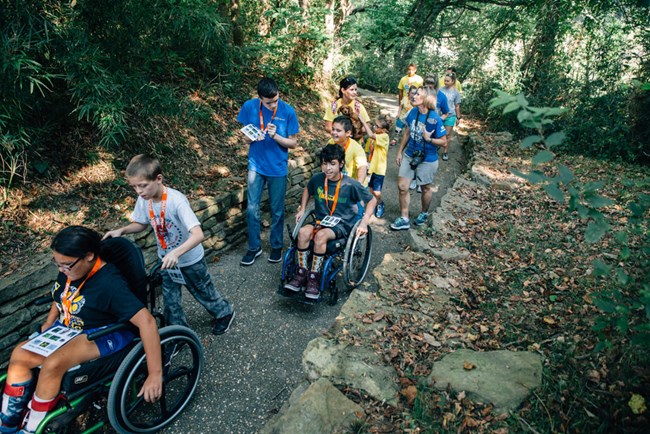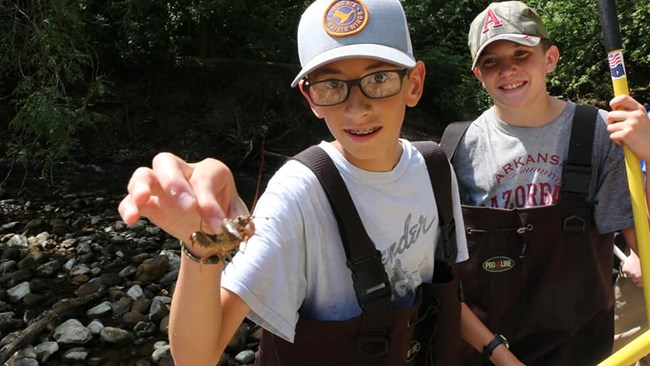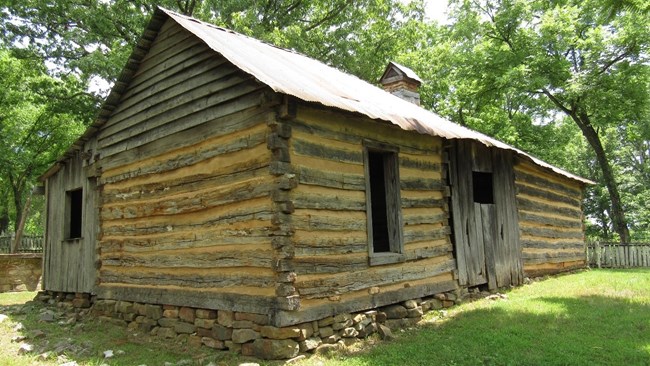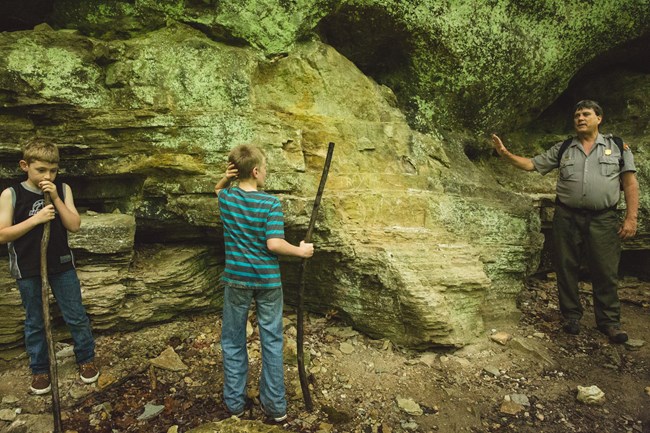
T. Fondriest The National Park Service offers many educational opportunities for students to experience the natural and cultural history of Buffalo National River. Park rangers are available for classroom visits and presentations about the river, its inhabitants, and the National Park Service. If you would like a ranger to come to your classroom or assist you with a field trip, please call the area you would like to visit:
Curriculum-Based Education Program Wouldn't it be great if you could incorporate lessons from the classroom into a real world, hands-on experience? You can! Buffalo National River has a curriculum-based program aligned with Arkansas Standards called A Day By the Buffalo. The teacher's guide is available upon request at e-mail us. For brief descriptions of our most popular programs, scroll down. We encourage you to review your curriculum schedules and include A Day by the Buffalo programming throughout the school year whenever you are teaching the appropriate concepts. Reservations for Day by the Buffalo programs are accepted all year. Information and forms are sent to principals and teachers each fall as a reminder. Information and reservation forms may be requested at e-mail us. All reservations are first come first served. 
NPS Upper River (Boxley Valley/Ponca area):1. At The Water’s Edge 
NPS Middle River (Tyler Bend Area)1. At The Water’s Edge 
T. Fondriest Lower River (Buffalo Point) - Yellville/Flippin Area1. At The Water’s Edge |
Last updated: August 14, 2021
